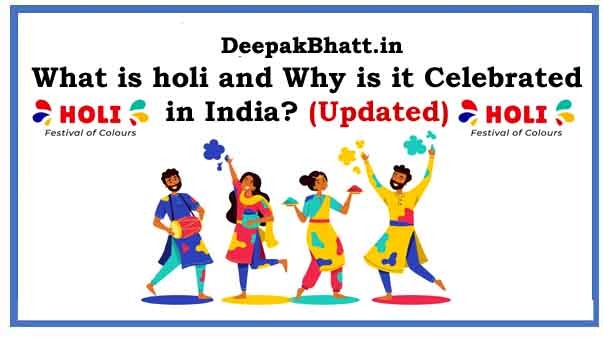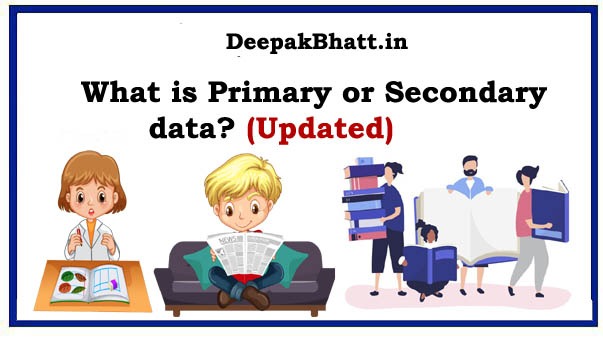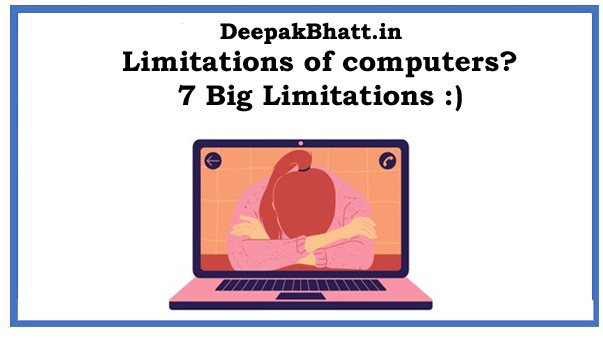What is Holi? Holi is a popular Hindu festival, also known as the “festival of colors” or the “festival of love,”
Which is celebrated mainly in India and Nepal, but also in other parts of the world. The festival usually falls in late February or early March and lasts for two days.
Holi marks the arrival of spring and the victory of good over evil. People celebrate by throwing colored powder and water on each other, dancing, singing, and feasting. It is also a time to forgive and forget, and people often reconcile and mend broken relationships.
Holi festival India: traditions, history, and celebrations
The festival has many myths and legends associated with it, but one of the most popular is the story of Prahlada, a young devotee of Lord Vishnu, and his evil father Hiranyakashipu.
The festival also celebrates the love of Lord Krishna and Radha, and the playful pranks that they used to play on each other with colors.
How is Holi celebrated?
Holi is usually celebrated over two days. On the first day, known as Holika Dahan or Choti Holi, people light bonfires and offer prayers to ward off evil spirits.
The bonfire symbolizes the burning of the demon Holika, who tried to kill Prahlada.
On the second day, known as Rangwali Holi, people gather in the streets, parks, and open spaces, and play with colored powders and water.
They smear each other’s faces with colored powders, throw water balloons and squirt guns filled with colored water, and dance to music.
People also visit friends and relatives, exchange sweets and snacks, and enjoy festive meals. Bhang, a traditional drink made with cannabis leaves, milk, and spices, is also consumed during Holi.
In some parts of India, people also dress up in traditional clothes, sing Holi songs, and perform folk dances. The festival is a time to forget differences, forgive and forget, and renew relationships.
Why has Holi become popular outside India?
Holi has become popular outside India for several reasons. One of the main reasons is the large Indian diaspora living in different parts of the world, who have brought the festival with them and introduced it to their communities.
In addition, the colorful and joyful nature of Holi has also attracted people from other cultures, who are drawn to the festival’s exuberance and spirit of fun.
Holi is a unique festival that promotes unity, forgiveness, and joy, which are values that are universally appealing.
Holi has also been featured in movies, music videos, and social media, which has helped to spread awareness of the festival to a global audience.
In recent years, many cities around the world have organized Holi festivals and events, which have become popular among people of all backgrounds.
Overall, Holi’s message of love, friendship, and unity transcends cultural boundaries and resonates with people from all walks of life, making it a truly global festival.
History of holi
The history of Holi is deeply rooted in Hindu mythology and has several legends associated with it.
One of the most popular legends is the story of Prahlada, a young prince who was a devotee of Lord Vishnu.
His father, the demon king Hiranyakashipu, was an atheist who forbade his son from worshipping Vishnu.
Despite his father’s orders, Prahlada continued to worship Vishnu, which angered Hiranyakashipu. He subjected Prahlada to various forms of torture, but the young prince remained steadfast in his devotion.
Finally, Hiranyakashipu’s sister Holika, who was immune to fire, tricked Prahlada into sitting on her lap in a fire, hoping to burn him to death.
However, the divine protection of Vishnu saved Prahlada, and Holika was burned to ashes.
The festival of Holi is believed to have originated from this legend. On the eve of Holi, people light bonfires known as Holika Dahan, which symbolize the burning of Holika and the victory of good over evil.
Another legend associated with Holi is the story of Lord Krishna, who used to play pranks with his friends and smear them with colored powders.
The festival of Holi is also celebrated to commemorate the playful love of Krishna and Radha.
Over time, Holi has evolved to become a celebration of spring and love, and people of all religions and backgrounds participate in the festival with great enthusiasm.
It is a time to forget differences, forgive and forget, and renew relationships, and is celebrated with joy and enthusiasm all over India and other parts of the world.
People also ask (FAQ)
1. What is Holi and how is it celebrated?
Holi is a Hindu festival, also known as the “festival of colors” or the “festival of love,” that is celebrated mainly in India and Nepal but also in other parts of the world. The festival usually falls in late February or early March and lasts for two days.
On the first day, known as Holika Dahan or Choti Holi, people light bonfires and offer prayers to ward off evil spirits. The bonfire symbolizes the burning of the demon Holika, who tried to kill Prahlada.
On the second day, known as Rangwali Holi, people gather in the streets, parks, and open spaces, and play with colored powders and water. They smear each other’s faces with colored powders, throw water balloons and squirt guns filled with colored water, and dance to music. People also visit friends and relatives, exchange sweets and snacks, and enjoy festive meals.
Holi is a time to forget differences, forgive and forget, and renew relationships. People of all ages and backgrounds participate in the festival with great enthusiasm, and it is a symbol of unity, love, and joy. The festival has become popular outside India due to the large Indian diaspora and the festival’s message of love and unity.
2. What is Holi short answer?
Holi is a Hindu festival, also known as the “festival of colors” or the “festival of love,” that is celebrated mainly in India and Nepal. It is a two-day festival where people light bonfires on the first day and play with colored powders and water on the second day. Holi is a symbol of unity, love, and joy, and is celebrated with great enthusiasm by people of all ages and backgrounds.
3. What is the real meaning of Holi?
The real meaning of Holi is multi-faceted and can vary depending on the region and the traditions followed. However, at its core, Holi is a celebration of spring, the victory of good over evil, and the renewal of relationships.
Holi is a time to forget differences and forgive, renew friendships, and strengthen bonds of love and unity. The festival encourages people to let go of past grievances and start afresh, promoting harmony and positivity.
Holi is also associated with various Hindu myths and legends, such as the story of Prahlada and Holika, which symbolizes the triumph of good over evil. The festival also celebrates the playful love of Lord Krishna and Radha, which is considered an ideal of divine love and devotion.
Overall, Holi is a celebration of life, love, and happiness, and it encourages people to come together and celebrate the joys of existence.
4. Why do we celebrate Holi 10 lines?
Here are ten lines explaining why Holi is celebrated:
- Holi is celebrated to mark the end of winter and the arrival of spring, which symbolizes new beginnings and renewal.
- Holi is also celebrated to commemorate the victory of good over evil and the triumph of truth over falsehood.
- The festival is associated with several Hindu myths and legends, such as the story of Prahlada and Holika, and the playful love of Lord Krishna and Radha.
- Holi is a time to forget differences, forgive and forget, and renew relationships, promoting unity, love, and harmony.
- The festival encourages people to let go of negativity and celebrate life with joy and enthusiasm.
- Holi is a symbol of unity, where people of all ages, genders, and backgrounds come together to celebrate the festival with great enthusiasm.
- The festival also promotes the values of brotherhood, equality, and fraternity, promoting social harmony and peace.
- Holi is a festival of colors and is celebrated by smearing colored powders and water on each other, symbolizing the breaking down of barriers and the celebration of diversity.
- The festival is an occasion to spread joy and happiness, with people exchanging sweets, snacks, and gifts with friends and family.
- Overall, Holi is a celebration of life, love, and happiness, promoting positive values and encouraging people to come together and celebrate the joys of existence.
5. Why do we celebrate Holi write in 150 words?
Holi is a Hindu festival that is celebrated primarily in India and Nepal but has gained popularity in other parts of the world as well. The festival is celebrated to mark the arrival of spring and to celebrate the victory of good over evil. It is a two-day festival where people light bonfires on the first day and play with colored powders and water on the second day.
Holi is a festival that promotes unity, love, and harmony. It is a time when people forget their differences and come together to celebrate life with joy and enthusiasm. The festival encourages forgiveness and promotes the renewal of relationships. It promotes the values of brotherhood, equality, and fraternity, promoting social harmony and peace.
Holi is also associated with several Hindu myths and legends, such as the story of Prahlada and Holika, and the playful love of Lord Krishna and Radha. The festival celebrates the breaking down of barriers and the celebration of diversity.
Overall, Holi is a celebration of life, love, and happiness, promoting positive values and encouraging people to come together and celebrate the joys of existence. The festival has become popular outside India due to the large Indian diaspora and the festival’s message of love and unity.
Conclusion
In conclusion, Holi is much more than just a festival of colors or a celebration of spring. It is a time to forget differences and forgive, renew friendships, and strengthen bonds of love and unity. Holi promotes positivity, brotherhood, and equality, promoting social harmony and peace.
Holi’s message of love and unity has made it popular not just in India and Nepal but across the world, where people of different cultures and backgrounds come together to celebrate the festival with great enthusiasm. The festival’s popularity has made it a symbol of India’s rich cultural heritage and traditions.
Overall, Holi is a celebration of life, love, and happiness, and it encourages people to come together and celebrate the joys of existence. It is a time to forget negativity and celebrate the beauty of diversity, promoting the values of harmony, peace, and positivity. The festival’s spirit of togetherness and love is something that we can all learn from and celebrate, not just during Holi but throughout the year.
Welcome all of you to my website. I keep updating posts related to blogging, online earning and other categories. Here you will get to read very good posts. From where you can increase a lot of knowledge. You can connect with us through our website and social media. Thank you








